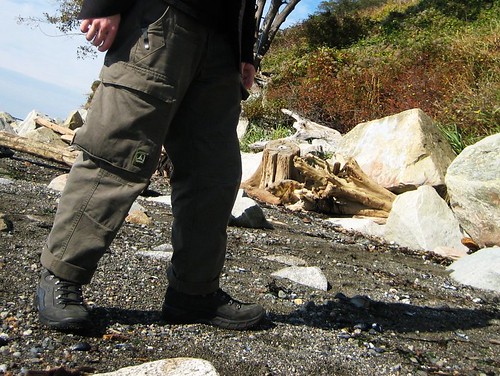TAD Gear Force 10 Legionnaire Classic Cargo Pants
You’d think that after however many thousands of years, pants would have stopped evolving. How much can you do with a pair of pants? Apparently, if you’re Triple Aught Design, just a little bit more.
TAD Gear’s Force 10 Legionnaire Classic Cargo Pants are an amazing pair of pants. I mean it. Really. There’s pants, and then there’s TAD pants. With a really big gap in between the two. And the TAD pants are on the upper end. Way up.
The Legionnaires are made from 7.5 oz cotton “gabardine” – which is just a fancy way of saying twill (I had to look that up). (They’re also available in ripstop.) They have two front pockets, two rear pockets, two cargo pockets, and two thigh pockets.
The cargo pockets aren’t just normal cargo pockets – they’re 9” deep behemoths (that’s a Hebrew word for beast, by the way). They’re great. You could probably loose something in their abyss, but they’re somehow non-intrusive.
The two front pockets aren’t just normal pockets, either. They both sport clip reinforcements. That’s right: both sides. And they aren’t just little reinforcements on the seams, like on 5.11 pants. They’re diamonds that reinforce the whole shebang and provide a more secure hold for your pocket knife, thanks to the thicker fabric. The right front pocket also has an interior coin pocket. (Note: I’ve found that these pockets do not work with Emerson Knives’ wave opener.) I should also mention that the pockets are made of the same tough material as the rest of the pants – a welcome feature, to be sure. The first failures I always experience on pants are holes in the cheap material used to make pockets.
The back pockets are just normal back pockets. (You thought I was going to say they weren’t, didn’t you? Well, they do have the very stylish button-and-ribbon closures that are also found on the cargo pockets.)
The front of the pants have two D-rings, one on each side. Again, beating 5.11 pants by one. I really don’t know why more folks don’t put these on their pants.
Every single stress point on these pants are bartacked. All of them. There’s not a single point where reinforcements are missing. The butt is reinforced, the knees are reinforced and slightly articulated, every seam is reinforced.
The absolute best thing about these pants are the two front thigh pockets. It’s honestly hard for me to put on a pair of pants without these now. They’re a perfect fit for seemingly everything I want to put in them – cell phone, gps, camera, energy bar, notepad.
Another amazing feature – and one that makes me love TAD even more – is that the only logo on the pants (excluding the “TAD Gear green label” on the inside of the fly) is velcroed on to the right cargo pocket. Velcroed. TAD is actually giving the wearer the option of advertising for them. What other company does that? Everyone else plasters their logos all over their products and forces me to go to the trouble of cutting them off or covering them up. (TAD, Kifaru, and Arc’Teryx are usually the only companies I billboard for.)
Last June I used the uniform grant I had been given to buy a pair of TAD’s Force 10 Combat Pants (seen here on patrol) and I actually like the Legionnaires better. The Force 10’s triple reinforced knees added a good deal of heat in the sun and I didn’t find them necessary for my needs. I liked the top slot of the cargo pockets, but I found that the internal dividers would sometimes annoy me as I’d blindly reach into the pockets, groping for something, and put my hand into one of the smaller pockets instead of the main bellow. The ribbons on the cargo pocket buttons weren’t sewn down (as they are on these newer Legionnaires) and often got in the way. The one feature I really wish they’d carry over to the Legionnaires is the diamond gusseted crotch.
In case you haven’t caught on, the Legionnares are amazing pants. They’re expensive, but worth the money. Go hungry for a few days if you have to. I’ve worn these pants every day since I bought them last month, and if I had the money I’d purchase a second pair.
(MilitaryMorons, of course, has a better review, though his are a slightly older style. These new ones have a zipper fly instead of buttons and all pocket ribbons are now sewn down.)
Some people have been curious about my rolls. I started rolling my pants last year at MutantFest. I got too lazy to blouse them every day, but wanted to keep them out of the water and mud. After that, it stuck. I started riding a bike, and the rolling kept the right pant leg from getting messed up the chain. It isn’t dependent on wearing combat boots – I can do it with shorter hikers. I’ve since discovered that rock climbers roll their pants. I like to think that copying them makes other folk less excited than bloused pants with combat boots. But most of all, I keep doing it because I can refer to my rolled pants as “combat knickers”, which is a source of great amusement.

